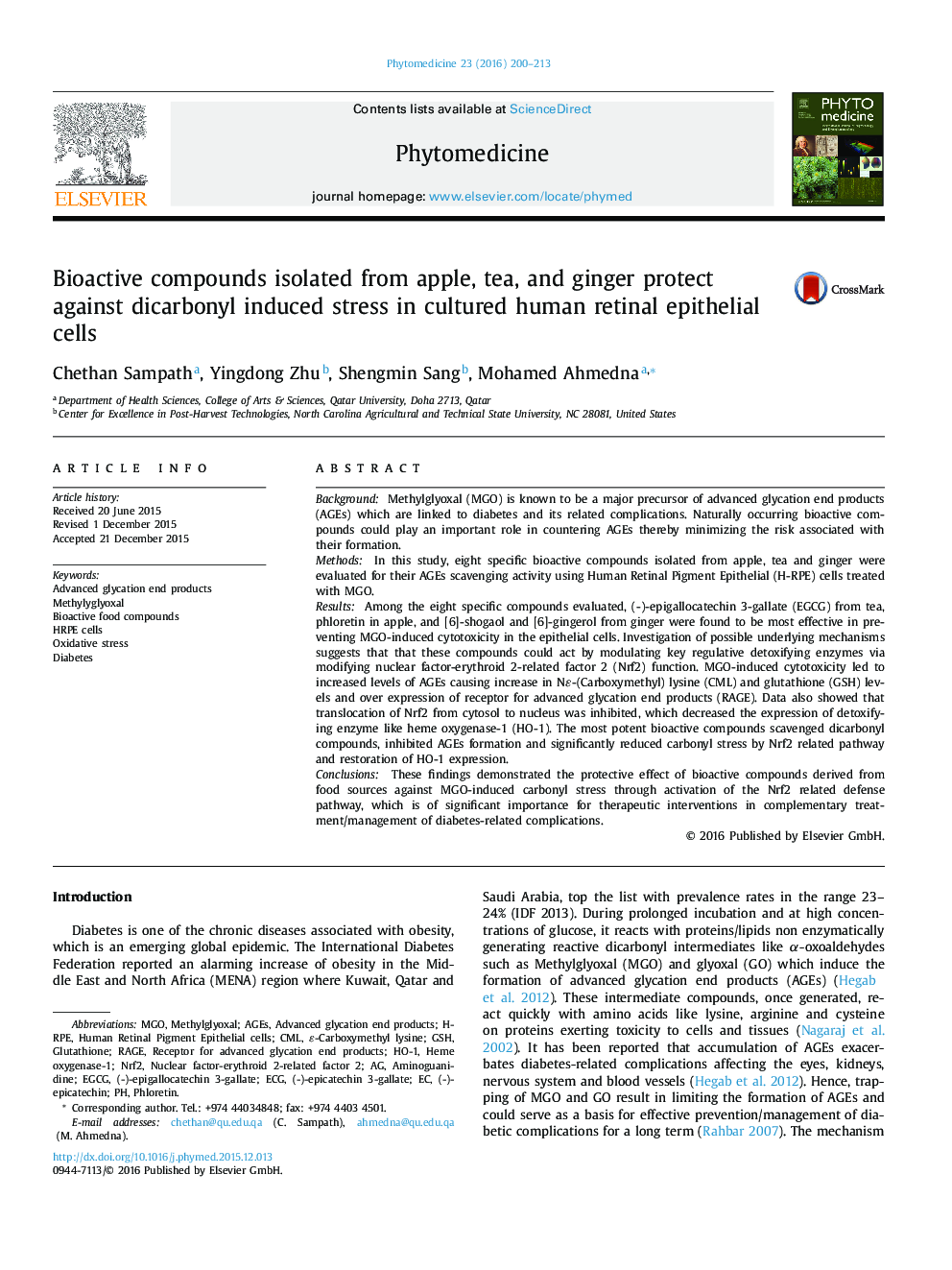| Article ID | Journal | Published Year | Pages | File Type |
|---|---|---|---|---|
| 2496366 | Phytomedicine | 2016 | 14 Pages |
BackgroundMethylglyoxal (MGO) is known to be a major precursor of advanced glycation end products (AGEs) which are linked to diabetes and its related complications. Naturally occurring bioactive compounds could play an important role in countering AGEs thereby minimizing the risk associated with their formation.MethodsIn this study, eight specific bioactive compounds isolated from apple, tea and ginger were evaluated for their AGEs scavenging activity using Human Retinal Pigment Epithelial (H-RPE) cells treated with MGO.ResultsAmong the eight specific compounds evaluated, (-)-epigallocatechin 3-gallate (EGCG) from tea, phloretin in apple, and [6]-shogaol and [6]-gingerol from ginger were found to be most effective in preventing MGO-induced cytotoxicity in the epithelial cells. Investigation of possible underlying mechanisms suggests that that these compounds could act by modulating key regulative detoxifying enzymes via modifying nuclear factor-erythroid 2-related factor 2 (Nrf2) function. MGO-induced cytotoxicity led to increased levels of AGEs causing increase in Nε-(Carboxymethyl) lysine (CML) and glutathione (GSH) levels and over expression of receptor for advanced glycation end products (RAGE). Data also showed that translocation of Nrf2 from cytosol to nucleus was inhibited, which decreased the expression of detoxifying enzyme like heme oxygenase-1 (HO-1). The most potent bioactive compounds scavenged dicarbonyl compounds, inhibited AGEs formation and significantly reduced carbonyl stress by Nrf2 related pathway and restoration of HO-1 expression.ConclusionsThese findings demonstrated the protective effect of bioactive compounds derived from food sources against MGO-induced carbonyl stress through activation of the Nrf2 related defense pathway, which is of significant importance for therapeutic interventions in complementary treatment/management of diabetes-related complications.
Graphical abstractFigure optionsDownload full-size imageDownload high-quality image (137 K)Download as PowerPoint slide
